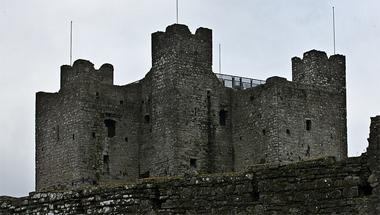The wooden toy castles we know today, with their classic turreted shape and design which allows easy play with miniature figures are a relatively modern phenomenon, however the history of wooden toy castles goes back many thousands of years, all the way back to the Roman and ancient Greek periods around 950 B.C.
Ancient finds show that toy figures, utensils and other miniatures could only have been intended as part of a collection associated with a toy house or fortress, showing that even in this time the concept of a toy castle or household was one which was well understood and valued.
The shape and dimensions of the toy castles we know and love today probably were fixed around the same time as full-size castles started to appear in Europe. Examples of wooden built castles and fortifications started to appear around 1050A.D. in Europe, with the first castles appearing in the UK around 1066, although much earlier fortified houses have been attributed to both the Sumerians and the early cultures in North Africa.
Early castles in the UK were wooden structures and were built of rough hewn wood and dawb (mud and straw) which were built on the ‘motte and bailey’ (from the French, mound and enclosed land), so were not the type of castles that we recognise from later structures in the UK. These ‘castles’ were more like fortified villages, where the village was ringfenced with fortifications for the protection of those inside. Raised land was used in this case to give extra protection and an advantage over invading forces.
The types of castles which our modern day wooden toy castles were made to imitate came much later, with the construction by the Normans of castles using stone and rock. many examples of these stone built castles still stand today in the UK and in Normandy, showing the distinctive corner turret and high wall arrangement protecting an interior open space.

